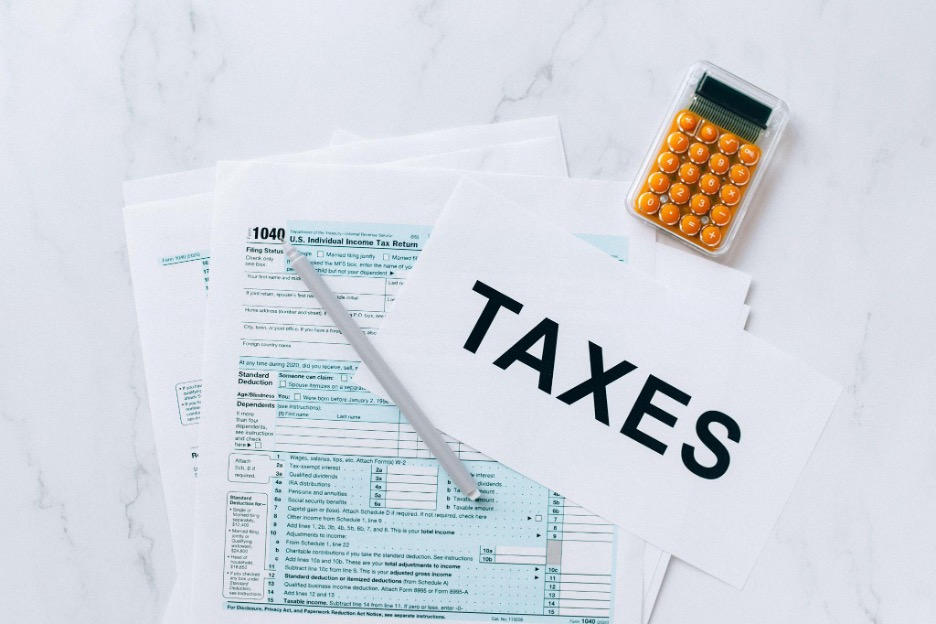India’s 101st Constitution Amendment Act established the ‘one nation, one tax system. Here’s a brief on the Act.
The Constitution’s 101st Amendment Act 2016 was vital in implementing India’s Goods and Services Tax (GST). The Goods and Services Tax replaced all previous indirect taxes levied on the country’s production, sale, and consumption of goods and services.
The GST, for example, replaced excise duty, Octroi tax, customs duty, service tax, entry tax, entertainment tax, and other indirect taxes, resulting in a single indirect tax.
Must Read: Best Peer-to-Peer Lending Platforms in India 2022
Let’s learn more about the 101st constitutional amendment act in detail.
Overview of the 101st Constitutional Amendment Act
Because GST involved a complete tax regime change and restructuring of both central and state taxes, the Empowered Committee of State Finance Ministers was tasked with developing a road map to implement the GST 101 amendment (EC).
The EC proposed two GST components: a central GST levied and collected by the central government and a state GST levied and collected by the states. The Parliament passed the Constitutional 101 Amendment Act 2016, and after some state ratifications, the President of India granted permission to the bill.
101 Constitutional Amendment Act—Taxation in India
The Constitutional 101 Amendment Act 2016 amended and inserted specific articles of the Constitution to achieve comprehensive GST enactment:
● GST Council formation
Article 279A empowered the President of India to appoint members to the GST Council from both the Centre and the States. The supreme court can create, modify, or repeal any law based on the GST 101 amendment.
● Inter-State Supply GST
Article 269A specifies how revenue from inter-state supplies is divided between the Centre and the states and empowers the GST Council to enact legislation in this regard. Importing goods or services is also considered an inter-state supply, and the central government levies IGST.
● GST Special Provision
Article 246A was added to the Constitution to allow the Parliament and state legislatures to pass GST legislation. However, the Parliament of India had the sole legislative authority for inter-state supplies. Furthermore, crude petrol, natural gas, motor spirit, high-speed diesel, and aviation fuel were exempt from GST.
● Restrictions on Service Taxation
Article 286 was already in place and prohibited state governments from enacting legislation that imposed a tax on the sale or purchase of goods. After the Constitution 101 Amendment Act of 2016, the restriction was extended to prevent state governments from enacting any laws pertaining to services.
● Important Definitions
An existing article, Article 366, was amended to include GST, Services, and State definitions.
● Revenue Reimbursement
The GST 101 Amendment also relieves states of revenue losses caused by implementing GST.
● Changes to the Constitution’s 7th Schedule
It contains three lists of subjects on which the federal and state governments can pass legislation. Appropriate changes were made to the list to ensure a smooth GST implementation.
The 101 Constitutional Amendment Act signalled the beginning of a new era in India’s tax regime. The GST 101 Amendment reduced the tax burden on small businesses while reducing corruption and instilling order and accountability in the unorganised sector.
Must Read: Top 13 Investments Options for Beginners in India 2022
Different types of Goods and Service Tax
There are four types of GST. The four types are as below:
● SGST (State Goods and Service Tax)
On intra-state goods and services transactions, the state government levies a state goods and services tax.
The state earns revenue from SGST on transactions involving goods and services conducted within the state.
The SGST replaced previous taxes such as VAT, luxury, entertainment, octroi, lottery, and purchase.
● CGST (Central Goods and Service Tax)
The central goods and services tax is levied on intra-state goods and services transactions conducted by the central government.
The Central Goods and Services Tax Act of 2017 governs it, and the central government receives the CGST revenue.
The central goods and services tax is divided equally between the federal and state governments. Both governments agreed to pool their respective tax portions to levy on the relevant intra-state goods and services transactions.
The CGST to levy should not be more than 14%. CGST replaced the entry tax, service tax, additional customs duty, special additional customs duty, excise duty, central excise duty, etc.
● IGST (Integrated Goods and Service Tax)
The Integrated Goods and Services Tax is levied on interstate transactions of goods and services. This Integrated GST applies to imports and exports, and the Integrated Goods and Services Tax Act of 2017 governs it.
The IGST revenue is split between the federal and state governments, and the revenue share agreed upon by both governments will be divided accordingly.
● UTGST (Union Territory Goods and Service Tax)
A specific union territory government levies the Union territory goods and services tax (UTGST) on goods and services transactions conducted within the union territory. The Union Territory Goods and Services Act of 2017 governs it and is levied in addition to the CGST. It applies to union territories as the SGST does to intra-state supplies of goods and services.
The Union Territories of Andaman and Nicobar Islands, Chandigarh, Dadra and Nagar Haveli & Daman and Diu, Lakshadweep, Jammu and Kashmir, and Ladakh have implemented UTGST. The state goods and services tax (SGST) applies in the Union Territories of Delhi and Puducherry because these UTs have their legislature.
Salient Features of the 101 Constitutional Amendment Act
● It combines many Central and State taxes (such as Central Excise Duty, Countervailing Duty, Service Tax, Value Added Tax, Octroi, and so on) into a single tax.
● It adds a new Article 246A to the Constitution, granting the central and state governments concurrent authority to enact laws governing the taxation of goods and services.
● Only the Centre has the authority to levy and collect an integrated GST during inter-state trade, which will get split between the Centre and the States.
● It calls for forming a GST Council to create a unified national market for goods and services.
● It provides state compensation for revenue losses caused by implementing the GST.
Benefits of GST
● It will be able to provide a single national market and eliminate tax cascading because it gives a uniform tax structure for the entire country.
● Self-monitoring system
● Simple compliance
● It eliminates barriers such as state entry taxes and octroi, making goods and services available at the same price across the country.
● Different types of GST available for central, state, and union territories will help the government get the tax and reduce corruption in the country.
To Conclude:
The Constitution 101st Amendment Act 2016 seeks to unify India’s common market and institute a new uniform indirect taxation system. It provides a clear tax structure for consumers based on the value of the goods and services they use.
The GST is not levied on certain goods and services or transactions, such as a gift given by an employer to an employee, agricultural services such as harvesting, renting or leasing of machinery, services provided by courts and tribunals, sale of land/building subject to schedule II paragraph 5(b), and so on.
The credit for input taxes will be available under the GST regime in the subsequent stage of value addition, making it taxable at the final step.





